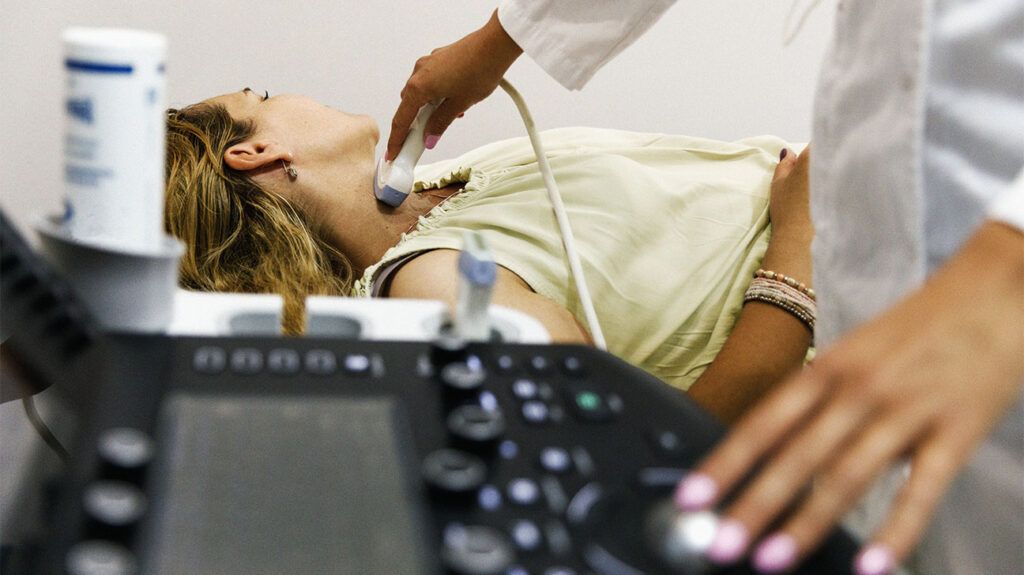The outlook for thyroid cancer depends on various factors, such as the stage and type. However, with most types of thyroid cancer, the outlook is positive in the early stages.
The 5-year relative survival rate for most types of localized thyroid cancer is over
This article discusses the prognosis for thyroid cancer, including survival rates by stage, type, age, and recurrence. It also looks at other factors that influence the outlook.

According to the
The
To measure survival, SEER uses 5-year relative survival rates. This metric represents how many people with a specific type and stage of cancer survived for at least 5 years in comparison to individuals their age without the disease.
SEER splits thyroid cancer cases into three stages:
- localized, which means the cancer is only present in the thyroid gland
- regional, which means the cancer has spread beyond the thyroid gland to nearby structures
- distant, which means the cancer has spread beyond the thyroid gland to distant body parts
The following data for thyroid cancer comes from people who had the condition between
| Thyroid cancer type | Stage | 5-year relative survival |
|---|---|---|
| Papillary | localized | greater than 99.5% |
| regional | 99% | |
| distant | 74% | |
| all stages combined | greater than 99.5% | |
| Follicular | localized | greater than 99.5% |
| regional | 98% | |
| distant | 67% | |
| all stages combined | 98% | |
| Medullary | localized | greater than 99.5% |
| regional | 92% | |
| distant | 43% | |
| all stages combined | 91% | |
| Anaplastic | localized | 39% |
| regional | 11% | |
| distant | 4% | |
| all stages combined | 8% |
It is worth noting that while the survival rates for the anaplastic type are not favorable, it is a
A
This finding concurs with the SEER percentages of thyroid cancer deaths according to age from the
| Age | Percentage of deaths |
|---|---|
| 20–34 | 0.7% |
| 35–44 | 1.7% |
| 45–54 | 6.2% |
| 55–64 | 17% |
| 65–74 | 27% |
| 75–84 | 28.4% |
| older than 84 | 19% |
A
In the study, only 6.9% of the 624 cases of papillary thyroid cancer the researchers analyzed experienced a recurrence. Papillary thyroid cancer is the most common type.
Survival statistics for this scenario are scarce, but an
The study found that the outlook depends on age. Individuals whose age was 45 and younger had a 5-year survival rate of 100%, while those whose age was over 45 years had a 5-year survival rate of 61.1%.
As this data is over 20 years old, survival rates for thyroid cancer recurrence may have shown improvement. Additionally, the cancer’s location and response to further treatments will affect the outlook.
In addition to age, cancer stage, and cancer type, other factors influence the outlook for thyroid cancer. They
- tumor size
- tumor location
- whether it has spread to lymph nodes
- whether surgical removal is possible
- individual response to treatment
The prognosis for most types of thyroid cancer is generally positive, particularly in the early stages. Treatment can cure
The 5-year relative survival rate of localized and regional stages of papillary, follicular, and medullary thyroid cancer is
Other factors that influence prognosis include age, recurrence, general health, and response to treatment.
